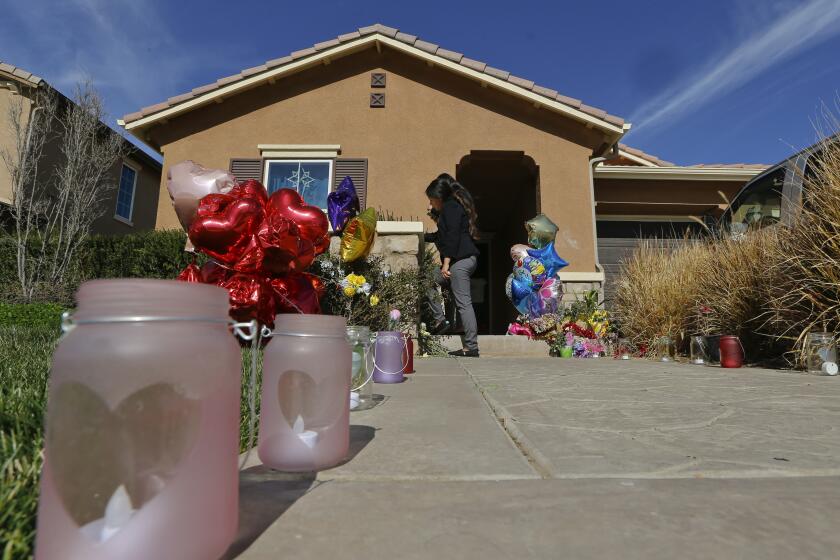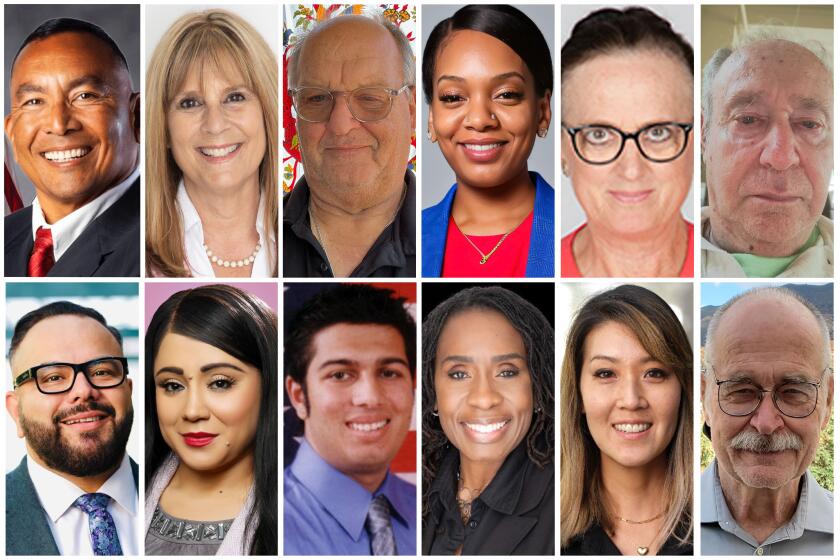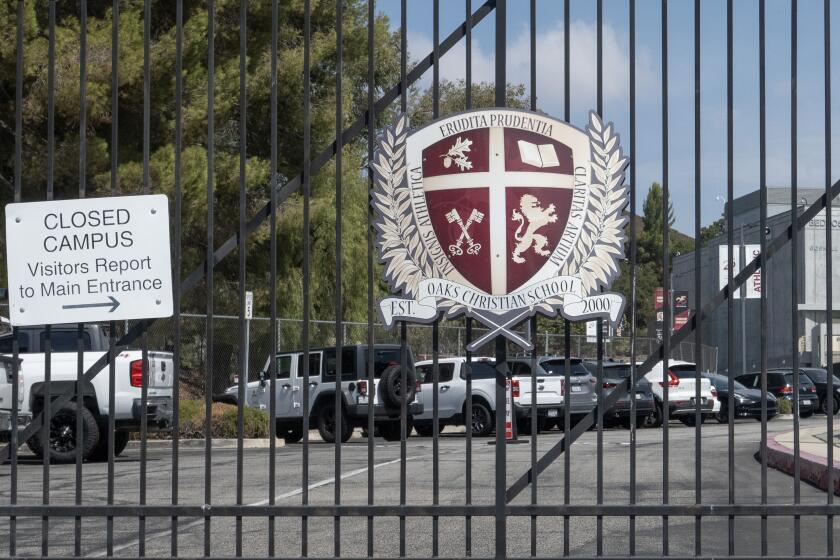The Bitter Lesson of Orion Ave.
Good and evil, so distinct from afar, blur as they grow nearer, until up close they can appear almost intertwined. That, in the end, was among the lessons of a four-part Times series about life on one of the San Fernando Valley’s most dangerous, most notorious, most contradictory streets--Orion Avenue. It’s a place where residents hide inside the stucco walls of run-down apartment buildings, where children with visions of a life beyond the gangs sell crack cocaine to finance those dreams, where families barely able to provide for themselves open their half-empty cupboards and wallets to neighbors in need, where mothers who curse the gangsters earn money by selling them soup.
After living in the North Hills neighborhood for three months, staff writer John Johnson and photographer Carolyn Cole, together with reporter Jose Cardenas, peeled back the veneer of Orion and revealed a place like so many others in Southern California--a neighborhood with interwoven identities that defy stereotypes and simple answers. Easy to write off as a lawless haven for junkies, criminals and other losers, Orion Avenue serves as a warning on how easily and quickly a neighborhood can slide into despair when good people make their peace with evil and allow it to flourish.
In the early 1980s, the neighborhood was home to Cal State Northridge students. But then drug dealers moved in and the college kids left. Immigrant families came to chase after the goals that lured generations before them. Some found their niche, living here like paupers as they squirreled away money for oceanfront homes in Mexico or El Salvador. Others are still searching for a piece of security. They rummage for recyclables, unwilling to peddle poison on the street. Yet all live under the fear imposed by the whimsical tyranny of the Langdon Street gang.
What is true on Orion is true in too many places. Police and neighbors regularly fight back, and it works for a while. But when the patrol cars leave, the gangsters return. Community groups can’t agree on strategies. Individual residents who speak out are beaten senseless by boys not old enough to drive. Police are slow to respond to “low-priority” calls of street fights. In the end, parents lose their children to the deadly promises of gangs.
On a street like Orion, fear and crime become a way of life, entrenched and nearly impossible to rout. But this sort of evil is incremental. It starts with graffiti, with teachers who look away, with a city that doesn’t seem to care, with parents who don’t think they have the time. Saving a street--or a child--demands that good people stand up early on. Later is too late, as the residents along Orion Avenue, sadly, have learned.
More to Read
Sign up for Essential California
The most important California stories and recommendations in your inbox every morning.
You may occasionally receive promotional content from the Los Angeles Times.










